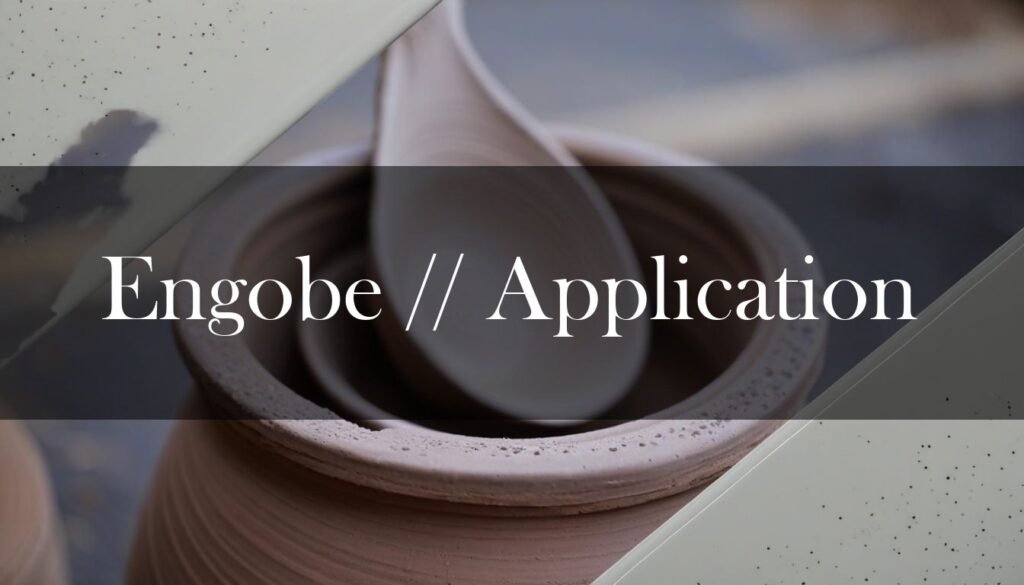Engobe, derived from the French word for slip, is a versatile tool in a potter’s arsenal, opening up a world of decorative possibilities for your ceramic creations. It’s essentially a liquid clay slip, but with a twist – the addition of materials like fluxes or silica. This little adjustment is what sets it apart from a regular slip and allows you to apply it to greenware and even bisque-fired pieces without the worry of significant cracking or flaking. You can use engobe to mask the underlying clay, introduce vibrant colors, or even create a surface that’s ready to bond beautifully with your glaze. For more information, check out this article.
Now, let’s get into the fun part: application! There’s a technique for every style and preference. Brushing is perfect for those intricate designs, letting you paint directly onto leather-hard or dry clay. Dipping, or immersion, is your go-to for achieving a smooth, even coat across larger areas. If you’re after seamless gradients, spraying with a spray gun or atomizer is the way to go. And for adding texture, slip-trailing with a squeeze bottle lets you create raised lines and detailed patterns. Don’t forget sgraffito, where you scratch through a layer of engobe to reveal the clay beneath, or marbling, where swirling multiple engobe colors together creates a stunning effect. Sponging is yet another cool technique, dabbing engobe onto the surface for unique textures and layered colors. You can see examples of marbling in the article Marbling Magic: Swirling Colors in Clay.
There’s a technique for every style and preference, so don’t be afraid to experiment.
One of the most important things to keep in mind is matching the shrinkage rates of your engobe and clay body. This compatibility is key to avoiding those frustrating cracks and peels. Also, consider the timing of your application – whether your clay is wet, leather-hard, or dry can affect how well the engobe adheres and the final look. And speaking of firing, engobes are pretty flexible, with options for low, mid-range, and high-fire temperatures. For instance, a simple mix of nepheline syenite and china clay can give you a lovely matte white surface when fired to cone 8–9.
Now, what if those pesky cracks do appear? Don’t worry, it happens to the best of us! Usually, cracking occurs due to applying the engobe too thickly, uneven drying, or, again, incompatible shrinkage rates. The trick is to apply thin, even layers, making sure each layer dries before adding another. Controlling the drying environment, like covering your piece with plastic, can also help prevent uneven drying.
By understanding these nuances and experimenting with different techniques, you’ll be well on your way to creating stunning, personalized ceramic pieces with engobe.





